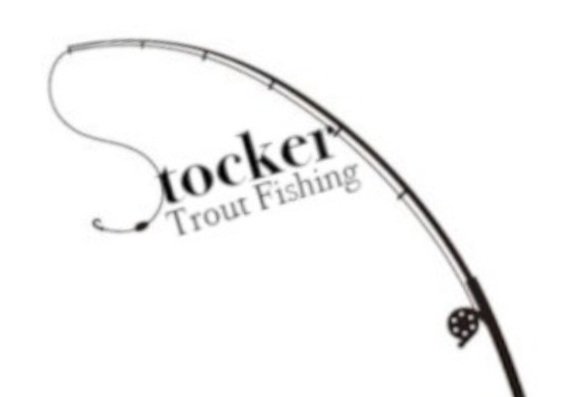Mastering the Art of Matching the Hatch for Fly Fishing Success
Fly fishing success often hinges on your ability to "match the hatch," a term used to describe the process of selecting and presenting artificial flies that closely resemble the natural insects and other prey that fish are actively feeding on. This comprehensive guide will walk you through the basics of matching the hatch, covering key insect species, fly selection, and presentation techniques to help you become a more effective fly angler.
The Importance of Matching the Hatch
Newly Hatched Flies Swarm on The River
You may ask yourself Why Match the Hatch? Matching the hatch is a fundamental concept in fly fishing, as it increases the likelihood of fooling fish into taking your artificial fly by closely imitating their preferred food sources. Doing this will allow you to catch more fish on a fly. The ability to recognize the various insects and other aquatic life that trout and other fish feed on, and to select and present appropriate imitations, can make all the difference between a slow day on the water and an unforgettable fishing experience.
Key Insect Species to Know for Fly Fishing
Mayflies on water
There are several primary insect species that fly anglers should be familiar with in order to effectively match the hatch. These insects include mayflies, caddisflies, stoneflies, and midges, as well as terrestrial insects like grasshoppers, ants, and beetles.
Mayflies: Mayflies are a common and important food source for trout, particularly during their nymph and adult stages. Mayfly nymphs are typically found in a variety of water types, from fast riffles to slow pools, and can be imitated using nymphing flies such as Pheasant Tail Nymphs, Hare's Ear Nymphs, and various mayfly-specific patterns. Adult mayflies, or duns, can be imitated using dry flies like the Adams, Blue Winged Olive, and Parachute Sulphur, among others.
Caddisflies: Caddisflies are another essential insect for fly anglers to understand, as they are a favorite meal for many fish species. Caddis larvae can be found in a range of aquatic habitats and are often imitated using wet fly patterns like the Czech Nymph or green caddis larvae patterns. Adult caddisflies can be imitated using dry flies such as the Elk Hair Caddis, X-Caddis, and Goddard Caddis.
Stoneflies: Stoneflies are a significant food source in many rivers and streams, particularly in fast-flowing, well-oxygenated waters. Stonefly nymphs are often large and can be imitated using patterns like the Kaufmann's Stone, Girdle Bug, and various stone fly nymph patterns. Adult stoneflies can be represented by larger dry flies like the Stimulator, Sofa Pillow, and Salmonfly patterns.
Midges: Midges are small insects that can be found in nearly every aquatic environment and are a crucial food source for trout, especially during the winter months. Midge larvae and pupae can be imitated using small nymph patterns like the Zebra Midge, WD-40, and Disco Midge. Adult midges can be represented by tiny dry flies such as the Griffith's Gnat, Parachute Midge, and various other midge-specific patterns.
Terrestrial Insects: In addition to aquatic insects, terrestrial insects like grasshoppers, ants, and beetles can become an important food source for fish during the warmer months. These insects can be imitated using larger dry flies like the Dave's Hopper, Foam Beetle, and various ant patterns.
Fly Selection: Choosing the Right Imitation
Very Well Made Mayfly Imitation fly
When attempting to match the hatch, it's essential to consider the following factors when selecting your fly:
Size: Ensure that your fly is a similar size to the natural insects present in the water. If you're unsure of the exact size, it's generally better to err on the side of a slightly smaller fly.
Color: Try to match the color of the natural insects as closely as possible. This might mean carrying multiple variations of the same pattern in different colors.
Shape: The shape of your fly should closely resemble that of the natural insect. This is particularly important for dry flies, as the silhouette is more visible to fish when viewed from below.
Data Table For Matching the Hatch South Eastern United States in January and February
South Carolina, Georgia, Florida, Alabama, Tennessee, North Carolina, Kentucky
| Month | Insects | Time of Day | Suggested Patterns |
|---|---|---|---|
| January | Midge #18-24 | Afternoons | Para Blue Wing Olive #18-22, any small black stonefly #18, San Juan Worms #10-14, Squirmy Wormies #10-12, Rainbow Warriors #14-20, Catamount Nymph #12-16, Girdle Bugs #8-12, Hot Head Marvins #8, Just Add Water Nymph #16-18, Zebra Midges #16-22, Bead Head Brassies #16-20, Little Lucy Midge #18-22, Y2K Orange/Yellow #10-14, Glo Bugs #10-16, Wooly Buggers Cone or Bead Head #6-12 |
| Tiny Blue Winged Olive #18-22 | Late Mornings-Afternoons | ||
| Early Black Stonefly #18 | All Day | ||
| February | Midge #18-24 | Afternoons | Para Blue Wing Olive #18-22, any small black stonefly #18, San Juan Worms #10-14, Squirmy Wormies #10-12, Rainbow Warriors #14-20, Catamount Nymph #12-16, Girdle Bugs #8-12, Hot Head Marvins #8, Just Add Water Nymph #16-18, Zebra Midges #16-22, Bead Head Brassies #16-20, Little Lucy Midge #18-22, Y2K Orange/Yellow #10-14, Glo Bugs #10-16, Wooly Buggers Cone or Bead Head #6-12 |
| Blue Winged Olive #18-22 | |||
| Early Black Stonefly #18 | All Day |




